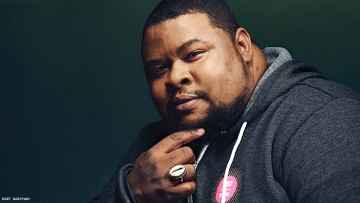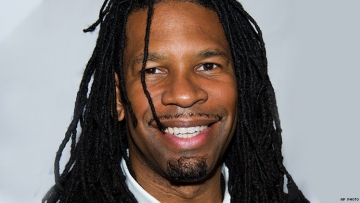
“If you are a black man, [race] may effect the size of the potential number of other men that you could have sex with, that you would engage with in social context, and then you would further go on to have sex with. If your pool of men is smaller, then it’s a lot easier for HIV to move around in that smaller pool. You may not be having more sex—and you may even be having less sex — [but] because you have a much smaller pool of available men to have sex with, it makes [contracting]HIV a lot easier.”
The impact of those smaller dating pools is compounded by racism. As The New York Times previously reported, at one popular dating site, 80 percent of contacts initiated by white members were connections with other white members. Only 3 percent of contacts initiated by white members were with black members.
The influence of social sexual networks also intensifies over time. Since the early days of the AIDS epidemic, gay and bisexual men have had higher rates of HIV than straight men. Men who have sex with men are in the minority, so every case of HIV impacts their community differently than one case in the straight dating pool. Add to that the fact that vaginal sex has a lower risk of transmitting HIV than anal sex — for a variety of reasons — and the rates of HIV among gay and bi men continue to outpace those of straight men.
Some of Goldstein’s research (published in the journal Epidemiology) takes into account whether disparities between groups are “real” or if they are hiding other influences, such as a tendency to underreport things that are socially stigmatized. For example, Goldstein says, “If you are black or African-American, you face more stigma in your community for disclosing that you are MSM. We thought, well maybe this is a prime reason why we see these divergent estimates in HIV risk.”
In fact, many studies rely entirely on the self-identification of risk factors and sexual orientation. But Goldstein’s research team wanted to account for those whose sexual identity doesn’t reflect their behavior. He points out that the risk for a gay man who receives oral sex, is significantly different from a straight-identified man who is the receptive partner in anal intercourse with another man.
In addition to “accounting for how risk is assessed,” Goldstein says his team also established who that risk is being compared to. Comparing black gay and bi men with straight black men, they found something surprising: the disparity between straight white men and white MSM is larger than the HIV disparity between black straight men and black MSM. This is, Goldstein simplifies, because the black community as a whole has higher rates of HIV than the white community.
Just as there’s this misconception that gay and bi black men have riskier sex, there’s a similar stigmatizing mythology around drug use. Increased drug use does play a part in compounding risks among gay and bisexual men of all races. The CDC found gay and bi men were five times as likely to try injection drugs (10 percent reported trying them). But, black gay and bisexual men have repeatedly been shown to be less likely than white MSM to have a history of substance use.
Last year, International Journal of Drug Policy published Goldstein’s report evaluating usage of drugs among racial and sexual minorities.
“When we examine drug use as a whole according to race it can be misleading,” Goldstein says now. “Which is why in our report in IJDP we further decomposed the data by sexual behavior, which I’m not sure anyone had done [up to] that point in a nationally representative sample. Thus, our comparisons are between racial groups with respect to sexual identity. For example, it’s not that white men are more likely to use amphetamines, compared to black men; it’s that white gay men are more likely to use them compared to black gay men.”
Goldstein maintains that the disparities between black gay men and white gay men lower dramatically when all factors are accounted for, including intersecting and compounding issues like racism, homophobia, and poverty.
“We’ve done as good of a job as we can in accounting for how information is measured in surveys — whether it is sexual behavior information, whether it’s drug use behavior information — and we’ve accounted that really to the extent that we can go,” Goldstein acknowledges.
But, even after factoring in all “these underlying risk differences between the groups,” Goldstein adds, “there really is something different between the racial groups, that we posit is related to the concept of a social sexual network.”
But, the questions remain: How do we prove that? How do we solve that? Nobody knows, but that won’t deter researchers like Goldstein.
“Overall, that’s where we’re at,” he says of the social sexual network theory. “Unfortunately we just don’t have good data on those because that is very hard to ascertain.”















READER COMMENTS (